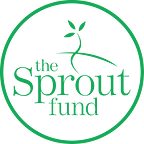Key Considerations for the Badge-Curious
Digital Badges recognize and reward learning that happens anytime, anywhere. Badges can act as a bridge between learning experiences and can begin to make these alternative channels, skills, and types of learning more viable, portable, and impactful. Badges can also help educators build learning pathways: They can represent steps along a student’s learning journey, and they can help students more effectively tell the story of the knowledge, skills, and dispositions they learned along the way.
When considering digital badges, it is important to reflect on the context in which they were initially developed. For our purposes, the history of digital badges dates back to 2010, with the release of a white paper titled, Open Badges for Lifelong Learning, written by The Mozilla Foundation and Peer 2 Peer University, in collaboration with The MacArthur Foundation. However, the broader notion of badging — awarding artifacts to symbolize achievements — goes back much further.
Military badges and scouting badges are probably the most notable examples of traditional badging. More recently, though, apps and games have borrowed the concept to signify achievements in digital settings. The Mozilla white paper focused on the intersection of several phenomena: the changing nature of learning, the emergence of digital technology, and the need to develop new ways to recognize learning.
The theory of learning supporting the early work on digital badges is called Connected Learning. The approach was detailed in a 2013 report titled, Connected Learning: An Agenda for Research and Design. According to the Connected Learning Alliance, “Connected Learning puts progressive, experiential, and learner-centered approaches at the center of technology-enhanced learning.”
The theory of Connected Learning emphasizes six themes: Developing learning experiences that are (1) interest powered, (2) production centered, (3) peer supported, (4) openly networked, (5) academically oriented, and (6) motivated by a shared purpose. Learn more about Connected Learning by watching this video.
Connected Learning and digital badging emerged simultaneously. Accordingly, people started exploring the potential of connecting these two emerging paradigms. As a group of collaborators from Mozilla wrote, “digital badges can support connected learning environments by motivating learning and signaling achievement both within particular communities as well as across communities and institutions.” Learn more about Mozilla’s perspective by watching this video that was published in 2013.
By connecting interest-driven learning, new skills, and new literacies to a broader network of accreditation and recognition, badges could enable each learner to capitalize on the current learning experiences and inspire and help them to seek out new ones. Badges could also help learners communicate their achievements and skills to necessary stakeholders: A portfolio of digital badges, sometimes called a backpack, could be used by learners to demonstrate achievements to admission counselors, potential employers, and others.
While badges are still new to most people, they have increasingly gained traction and recognition in a variety of settings. School districts like Colorado’s Aurora Public Schools have adopted badges to recognize students for acquiring 21st century skills. Regional leaders like Detroit Public Television have developed systems of badges that help children and parents engage in learning activities in learning spaces and cultural institutions across metro Detroit. Badges can support adult learning too: nonprofit Digital Promise has developed a series of micro-credentials for preservice and veteran teachers, while corporations like IBM use badges to gauge professional growth for new and existing employees.
If learning happens anywhere and anytime, then digital badges can be a way for learners to use technology to gain recognition for the skills and competencies they acquire both within and outside of traditional learning settings. Moreover, digital badges can help people find new paths of discovery, explore their community’s rich resources, and find out what they can learn, make, do, and ultimately become.
